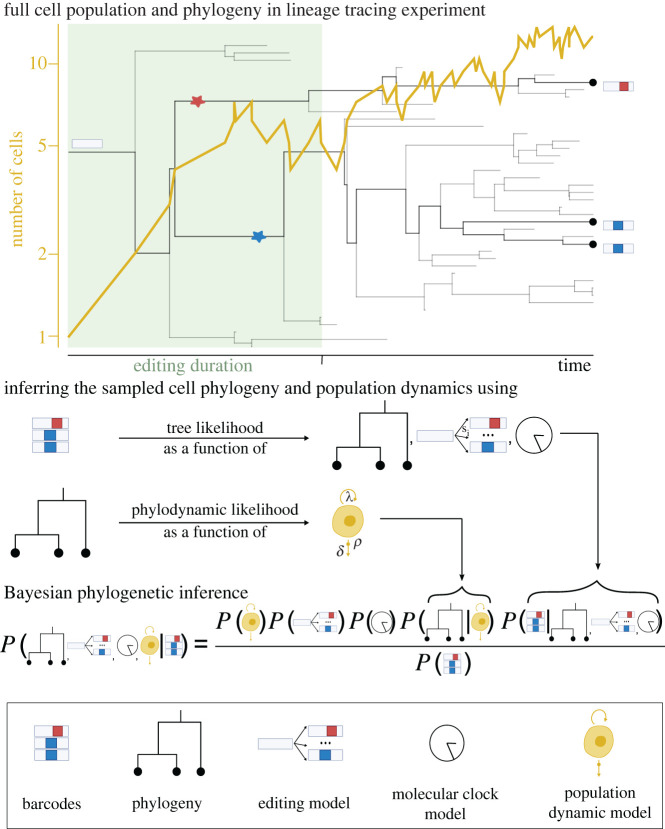Figure 2.
Bayesian phylogenetic inference using lineage tracing data. In a lineage tracing experiment, the full cell population process and the complete phylogeny connecting all cells are unobserved. A subset of cells is sequenced yielding the lineage tracing barcodes. We can reconstruct the sampled phylogenetic tree from the barcodes using the tree likelihood. The sampled phylogenetic tree contains information on the full cell population process—such as on cell division (λ) and apoptosis rates (δ)—that can be extracted using the phylodynamic likelihood. In Bayesian phylogenetic inference, we jointly infer the sampled phylogeny and the parameters of the cell population process. Information on any model parameter can easily be incorporated by the use of prior distributions.

